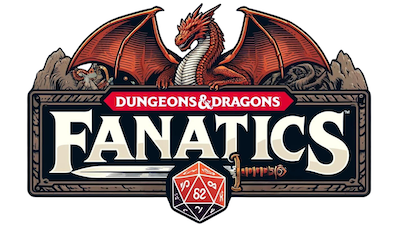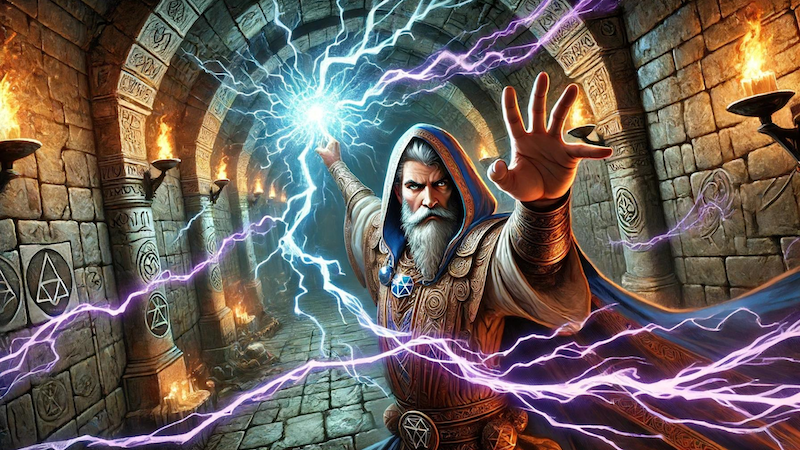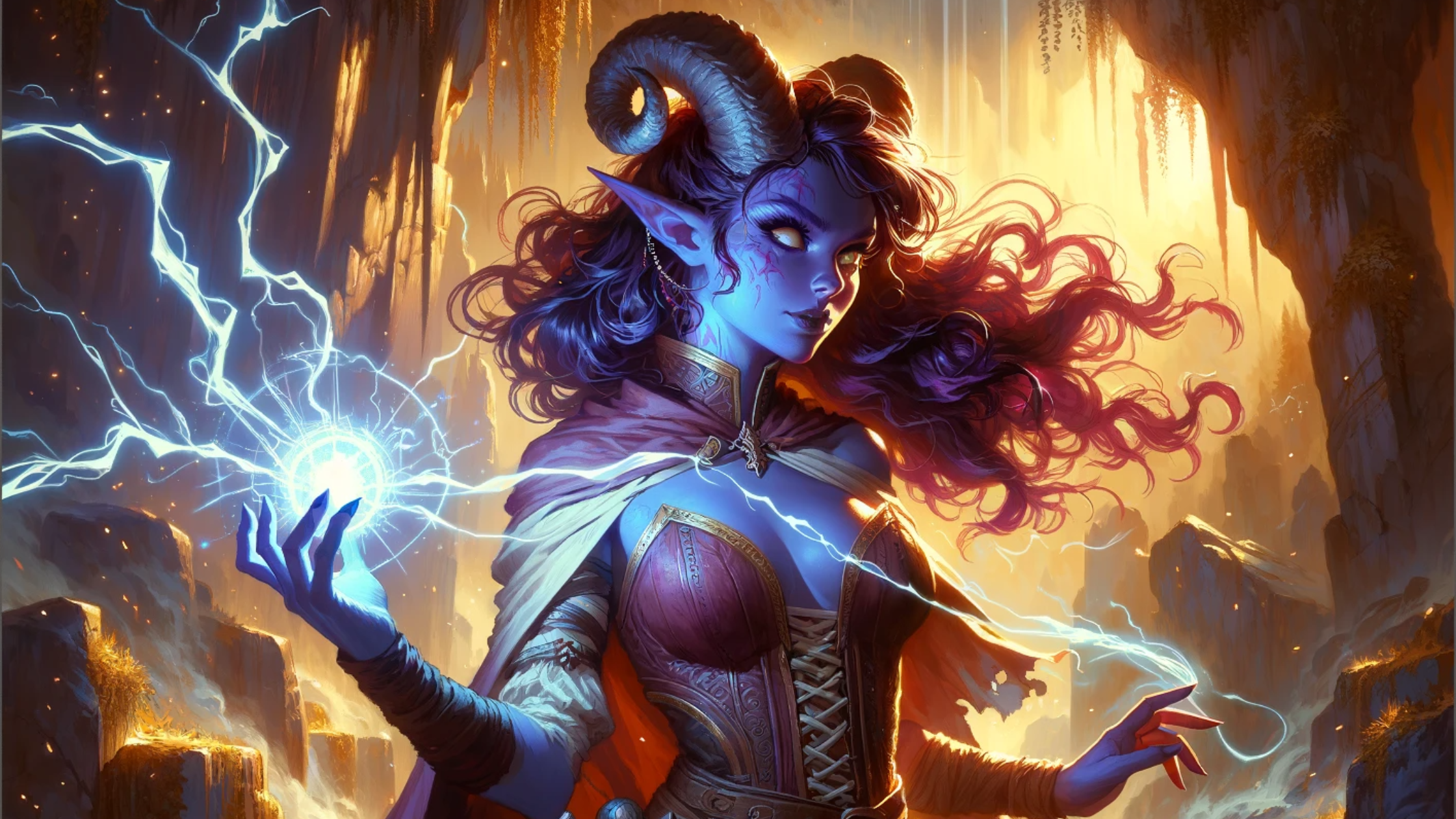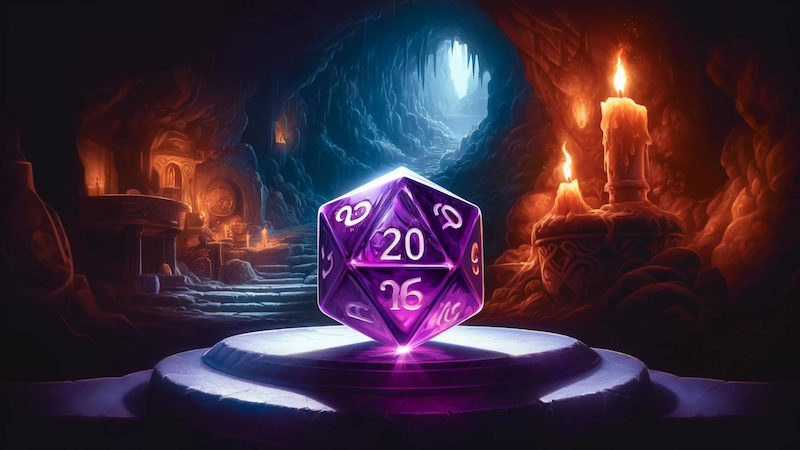

The Ranger: DnD 5e Class Guide (Updated May 2024)
As an Amazon Associate I earn from qualifying purchases.
Aric passed silently through the forest, his keen eyes scanning the shadows. Hidden in the underbrush, he carefully drew his bow, the string taut against his fingers as he took aim. The clouds parted, moonlight piercing the canopy and illuminating the goblin patrol. Aric released both his breath and the arrow at the same time. The goblin chieftain was dead before he hit the ground, the arrow piercing his throat, but Aric was already firing again, raining down death on those who had foolishly chosen to enter his domain.
Table of Contents
- What is a Ranger in DnD 5e?
- What is a Ranger’s primary ability score?
- What is a Ranger’s hit die and hit points?
- What are Rangers proficient in?
- What equipment do Rangers start with?
- What unique features do Rangers have?
- How does Ranger spellcasting work?
- What are the Ranger subclasses?
- What species are best for Rangers?
- How do you roleplay a Ranger?
- What DnD 5e sourcebooks do Rangers appear in?


What is a Ranger in DnD 5e?
Masters of survival and tracking, Rangers are one of the most unique and multifaceted DnD 5e classes. Adept at navigating both wilderness and enemy territories, these unique warriors haunt the wilds that dwell on the periphery of so-called civilized realms.
As protectors who are deeply connected to the natural world, Rangers who can also tap into this connection to cast spells, making them spiritually akin to Druids. In combat, however, they have a similar disposition to Fighters, while their stealth and speed shares much in common with Rogues.
And while Rangers are often viewed as one dimensional woodland warriors, in reality they can encompass a wide variety of builds and roleplaying options. A Ranger might be a sacred guardian of an ancient forest, a bounty hunter who tracks down wanted criminals or a magical defender who battles extraplanar monsters. The possibilities for building your own memorable Ranger character are literally endless.
Below is the Ranger class table, detailing their proficiency bonuses, key features and spell slots.
| Ranger Class Table | Spell Slots per Spell Level | |||||||||||
|---|---|---|---|---|---|---|---|---|---|---|---|---|
| Level | Proficiency Bonus | Features | Spells Known | 1st | 2nd | 3rd | 4th | 5th | ||||
| 1st | +2 | Favored Enemy, Natural Explorer | – | – | – | – | – | – | ||||
| 2nd | +2 | Fighting Style, Spellcasting | 2 | 2 | – | – | – | – | ||||
| 3rd | +2 | Primeval Awareness, Ranger Conclave | 3 | 3 | – | – | – | – | ||||
| 4th | +2 | Ability Score Improvement | 3 | 3 | – | – | – | – | ||||
| 5th | +3 | Extra Attack | 4 | 4 | 2 | – | – | – | ||||
| 6th | +3 | Favored Enemy Improvement, Natural Explorer Improvement | 4 | 4 | 2 | – | – | – | ||||
| 7th | +3 | Ranger Conclave feature | 5 | 4 | 3 | – | – | – | ||||
| 8th | +3 | Ability Score Improvement, Land’s Stride | 5 | 4 | 3 | – | – | – | ||||
| 9th | +4 | 6 | 4 | 3 | 2 | – | – | |||||
| 10th | +4 | Natural Explorer Improvement, Hide in Plain Sight | 6 | 4 | 3 | 2 | – | – | ||||
| 11th | +4 | Ranger Conclave feature | 7 | 4 | 3 | 3 | – | – | ||||
| 12th | +4 | Ability Score Improvement | 7 | 4 | 3 | 3 | – | – | ||||
| 13th | +5 | 8 | 4 | 3 | 3 | 1 | – | |||||
| 14th | +5 | Favored Enemy Improvement, Vanish | 8 | 4 | 3 | 3 | 1 | – | ||||
| 15th | +5 | Ranger Conclave feature | 9 | 4 | 3 | 3 | 2 | – | ||||
| 16th | +5 | Ability Score Improvement | 9 | 4 | 3 | 3 | 2 | – | ||||
| 17th | +6 | 10 | 4 | 3 | 3 | 3 | 1 | |||||
| 18th | +6 | Feral Senses | 10 | 4 | 3 | 3 | 3 | 1 | ||||
| 19th | +6 | Ability Score Improvement | 11 | 4 | 3 | 3 | 3 | 2 | ||||
| 20th | +6 | Foe Slayer | 11 | 4 | 3 | 3 | 3 | 2 | ||||


What is a Ranger’s Primary Ability Score?
Dexterity is a Ranger’s primary ability score, followed closely by Wisdom. Your character must have a Dexterity and Wisdom score of 13 or higher to multiclass as a Ranger. This reflects the class’ focus on combat as well as their spiritual connection to nature.
The higher your Dexterity score the more skilled you’ll be in battle and the more you’re able to move quickly and quietly in a variety of different environments. This is particularly important at higher levels when you unlock new combat abilities.
Wisdom, however, is almost as important as an ability score for your Ranger, as it directly influences new class features as well as your spellcasting abilities.


What is a Ranger’s Hit Die and Hit Points?
Ranger’s have 1d10 hit dice per level. This mean at 1st Level your Ranger’s hit points will be 10 + your Constitution modifier. Each level you advance from Level 2 onwards, you gain an additional 1d10 (or an average of 6) Hit Points, plus your Constitution modifier.
This Hit Dice breakout makes Rangers one of the more resilient classes, putting them on par with Fighters and Paladins (both of whom also have 1d10 Hit Dice). Only the Barbarian (with its hefty 1d12 hit dice) outclasses the Ranger in terms of damage resistance. For context, Druids have just a 1d8 hit Dice, making Rangers the most resilient of the two nature-loving classes.


What are Rangers Proficient In?
Ragers have a unique set of skills that reflect their ability as warriors and wilderness survivors.
- Armor: Light armor, medium armor and shields
- Weapons: Simple weapons and martial weapons
- Tools: None
- Saving Throws: Strength and Dexterity
- Skills: Choose three from Animal Handling, Athletics, Insight, Investigation, Nature, Perception, Stealth and Survival


What Equipment Do Rangers Start With?
As a Level 1 Ranger, you begin your adventures with the following equipment, in addition to any equipment provided by your background:
- Scale mail or leather armor
- Two shortswords or two simple melee weapons
- A dungeoneer’s pack or an explorer’s pack
- A longbow and a quiver of 20 arrows


What Unique Features Do Rangers Have?
As a Ranger, you’re able to access a number of unique Features that reflect your wilderness survival skills, fighting prowess and ability to tap into the power of nature itself to cast magic.
- Favored Enemy: At 1st level chose a type of favored enemy: aberrations, beasts, celestials, constructs, dragons, elementals, fey, fiends, giants, monstrosities, oozes, plants or undead. Alternatively, you can select two races of humanoid (such as gnolls and orcs) as favored enemies. You have advantage on Wisdom (Survival) checks to track your favored enemies, as well as on Intelligence checks to recall information about them. When you gain this feature, you also learn one language of your choice that is spoken by your favored enemies (if they speak one at all). You choose one additional favored enemy, as well as an associated language, at 6th and 14th level.
- Natural Explorer: At 1st level, choose one type of favored terrain: arctic, coast, desert, forest, grassland, mountain, swamp or the Underdark (you choose additional favored terrain types at 6th and 10th level). When you make an Intelligence or Wisdom check related to your favored terrain, your proficiency bonus is doubled if you are using a skill that you’re proficient in. While traveling for an hour or more in your favored terrain, you gain the following benefits:
- Difficult terrain doesn’t slow your group’s travel
- Your group can’t become lost except by magical means
- Even when you are engaged in another activity while traveling (such as foraging, navigating, or tracking), you remain alert to danger.
- If you are traveling alone, you can move stealthily at a normal pace.
- When you forage, you find twice as much food as you normally would.
- While tracking other creatures, you also learn their exact number, their sizes, and how long ago they passed through the area.
- Fighting Style: At 2nd level, choose one of the following options. (NOTE: You can’t take a Fighting Style option more than once, even if you later get to choose again):
- Archery: You gain a +2 bonus to attack rolls you make with ranged weapons.
- Blind Fighting: You have blind sight with a range of 10 feet. Within that range, you can effectively see anything that isn’t behind total cover, even if you’re blinded or in darkness. Moreover, you can see an invisible creature within that range, unless the creature successfully hides from you.
- Defense: While you are wearing armor, you gain a +1 bonus to AC.
- Druidic Warrior: You learn two cantrips of your choice from the Druid spell list. They count as ranger spells for you, and Wisdom is your spellcasting ability for them. Whenever you gain a level in this class, you can replace one of these cantrips with another cantrip from the Druid spell list.
- Dueling: When you are wielding a melee weapon in one hand and no other weapons, you gain a +2 bonus to damage rolls with that weapon.
- Thrown Weapon Fighting: You can draw a weapon that has the thrown property as part of the attack you make with the weapon. In addition, when you hit with a ranged attack using a thrown weapon, you gain a +2 bonus to the damage roll.
- Two-Weapon Fighting: When you engage in two-weapon fighting, you can add your ability modifier to the damage of the second attack.
- Primeval Awareness: At 3rd level, you can use your action and expend one ranger spell slot to focus your awareness on the region around you. For 1 minute per level of the spell slot you expend, you can sense whether the following types of creatures are present within 1 mile of you (or within up to 6 miles if you are in your favored terrain): aberrations, celestials, dragons, elementals, fey, fiends, and undead. This feature doesn’t reveal the creatures’ location or number.
- Ability Score Improvement: When you reach 4th level, and again at 8th, 12th, 16th, and 19th level, you can increase one ability score of your choice by 2, or you can increase two ability scores of your choice by 1. As normal, you can’t increase an ability score above 20 using this feature.
- Extra Attack: Beginning at 5th level, you can attack twice, instead of once, whenever you take the Attack action on your turn.
- Land’s Stride: Starting at 8th level, moving through nonmagical difficult terrain costs you no extra movement. You can also pass through nonmagical plants without being slowed by them and without taking damage from them if they have thorns, spines, or a similar hazard. In addition, you have advantage on saving throws against plants that are magically created or manipulated to impede movement, such as those created by the Entangle spell.
- Hide in Plain Sight: At 10th level, you can spend 1 minute creating camouflage for yourself. You must have access to fresh mud, dirt, plants soot, and other naturally occurring materials with which to create your camouflage. Once you are camouflaged in this way, you can try to hide by pressing yourself up against a solid surface, such as a tree or wall, that is at least as tall and wide as you are. You gain a +10 bonus to Dexterity (Stealth) checks as long as you remain there without moving or taking actions. Once you move or take an action or a reaction, you must camouflage yourself again to gain this benefit.
- Vanish: Starting at 14th level, you can use the Hide action as a bonus action on your turn. Also, you can’t be tracked by nonmagical means, unless you choose to leave a trail.
- Feral Senses: At 18th level, when you attack a creature you can’t see, your inability to see it doesn’t impose disadvantage on your attack rolls against it. You are also aware of the location of any invisible creature within 30 feet of you, provided that the creature isn’t hidden from you and you aren’t blinded or deafened.
- Foe Slayer: At 20th level, you become an unparalleled hunter of your enemies. Once on each of your turns, you can add your Wisdom modifier to the attack roll or the damage roll of an attack you make against one of your favored enemies. You can choose to use this feature before or after the roll, but before any effects of the roll are applied.


How does Ranger Spellcasting Work?
When your Ranger reaches 2nd level, you have learned to tap into the power of nature itself to cast spells. This is essentially the same as how Druid magic works, although Rangers aren’t nearly as powerful in terms of their arcane abilities.
Like Druids, Rangers are able to cast any spell they wish from the Ranger spell list as long as you are of sufficient level and have spell slots available (see the “Ranger Class Table” above).
Wisdom is a Ranger’s primary spellcasting ability as follows:
- Spell save DC = 8 + your proficiency bonus + your Wisdom modifier
- Spell attack modifier = your proficiency bonus + your Wisdsom modifier
Rangers (along with Paladins) are officially “half-casters” which means that their spell list progression moves at half the speed as Wizards, Sorcerers, Bards and Druids (who are also known as “full casters”).


What are the Ranger Subclasses?
Currently, there are 8 official Ranger subclasses for DnD 5e known as “Conclaves”, which represent the range of different roles that these wilderness warriors take. You chose your Ranger Conclave subclass at Level 3.
- Beast Master: You bond with a loyal beast companion, commanding it in battle to fight by your side. Your connection allows you to work seamlessly as a team, enhancing your combat abilities and coordination.
- Drakewarden: You form a mystical bond with a drake, a dragon-like creature that assists you in battle. As you grow in power, your drake evolves, gaining new abilities that complement your own.
- Fey Wanderer: You draw on the mysterious magic of the Feywild, using enchantments and tricks to bewilder your foes and charm others. Your abilities also strengthen your mind, providing resilience against mental assaults.
- Gloom Stalker: You excel in darkness and ambush, using your skills to become nearly invisible in the shadows. Your attacks are swift and deadly, particularly at the onset of battle, giving you a critical advantage in the first moments of combat.
- Horizon Walker: You protect the world from extraplanar threats, gaining abilities that allow you to manipulate space and even teleport. Your attacks can bypass defenses as you harness the energies of the multiverse.
- Hunter: You specialize in tracking and defeating a variety of creatures, adapting your tactics based on the nature of your prey. In addition, you gain specific abilities that enhance your effectiveness against certain types of enemies.
- Monster Slayer: You focus on hunting down the most dangerous creatures, gaining supernatural abilities that help you track, confront and destroy these threats. Your skills make you particularly adept at disrupting your enemies’ abilities and resisting their magic.
- Swarmkeeper: You are surrounded by a swarm of tiny creatures or spirits that assist you in battle. This mystical connection to these creatures grants you a range of combat tactics, with both offensive and defensive capabilities.


What DnD 5e Species are Best for Rangers?
While Rangers hail every species, those that boost Dexterity or Wisdom scores tend to be the best option due to the Ranger’s reliance on these abilities for combat, stealth and nature-based magic. Below are a few species worth considering for your Ranger character.
- Elf (Wood Elf): Wood Elves receive a +2 bonus to Dexterity and a +1 to Wisdom, which is ideal for a Ranger’s archery and survival skills. Their proficiency in Perception and the ability to hide in natural foliage enhance their stealth and reconnaissance capabilities, making them natural scouts.
- Human: Humans are highly versatile, as they can increase any ability score by 1. This flexibility allows them to adapt to various Ranger builds, whether focusing on Dexterity for better combat skills, Wisdom for enhanced spellcasting and tracking, or even Constitution for increased endurance.
- Halfling (Stout Halfling): Stout Halflings get a +2 bonus to Dexterity and a +1 to Constitution. Their small size and nimble nature make them excellent at moving silently and avoiding attacks, which is perfect for a stealthy Ranger. Additionally, their resistance to poison can be invaluable in wilderness settings.
- Gnome (Forest Gnome): Forest Gnomes have a natural +2 to Intelligence and a +1 to Dexterity. Their ability to communicate with small animals and innate spellcasting (including illusion spells) can be creatively integrated into Ranger tactics for diversion and reconnaissance.


How Do You Roleplay a Ranger?
Rangers in DnD 5e are more than just fighters with a bit of survival training. They can actually encompass a wide swathe of characters with unique backgrounds, motivations and histories. Here are a few possible character concepts to for your Ranger.
- Pathfinder of the Forgotten Trails: An expert in uncovering hidden paths and lost cities, you lead expeditions into the most dangerous corners of the world. Your knack for navigation and survival makes you an invaluable leader in treks through uncharted territories.
- Sentinel of the Borderlands: Stationed at the fringes of civilized lands, you defend settlements from monstrous incursions. Your vigilance and prowess in guerrilla warfare ensure that no foe passes into your territory unnoticed.
- Ghostwalker: Skilled in the arts of stealth and camouflage, you move unseen and unheard. You have used this in your tireless fight against spectral and supernatural creatures that haunt the wilds, using your elusive techniques to outmaneuver these undead beings.
- Tracker of Renegades: Specializing in hunting down fugitives and escaped creatures, your tracking skills are unmatched. You often work with law enforcement or bounty hunters, bringing your unique abilities to bear in the pursuit of justice.
- Urban Hunter: Operating within the bustling cities, you have adapted the skills of a traditional ranger to an urban environment. Expert in navigating through crowded streets and back alleys, you track down criminal elements and maintain the natural balance within city parks, sewers and hidden green spaces.
- Subterranean Scout: Specializing in navigating and surviving in underground environments such as caves and dungeons. You protect ancient subterranean ecosystems and civilizations from threats both external and internal, using your knowledge of geology and cave ecology.
- Forsaken of the Wilds: Once a pampered city dweller you have taken to the wilderness to escape your past and atone for some dark misdeed. You have come to find solace in the embrace of nature, but your past weighs upon you.


What DnD 5e sourcebooks do Rangers appear in?
While Rangers have been around for decades, the class has seen a number of changes over the various editions of Dungeons & Dragons. Below are the specific DnD 5e sourcebooks which govern their rules:
- Player’s Handbook: Includes base Ranger class, plus the Hunter and Beast Master.
- Xanathar’s Guide to Everything: Gloom Stalker, Horizon Walker and Monster Slayer.
- Tasha’s Cauldron of Everything: Fey Wanderer and Swarmkeeper (also introduced new class features, including optional rules for Beast Master companions).
- Fizban’s Treasury of Dragons: Drakewarden.
More D&D News Coverage
For more from the world of Wizards of the Coast, visit our D&D News page.







